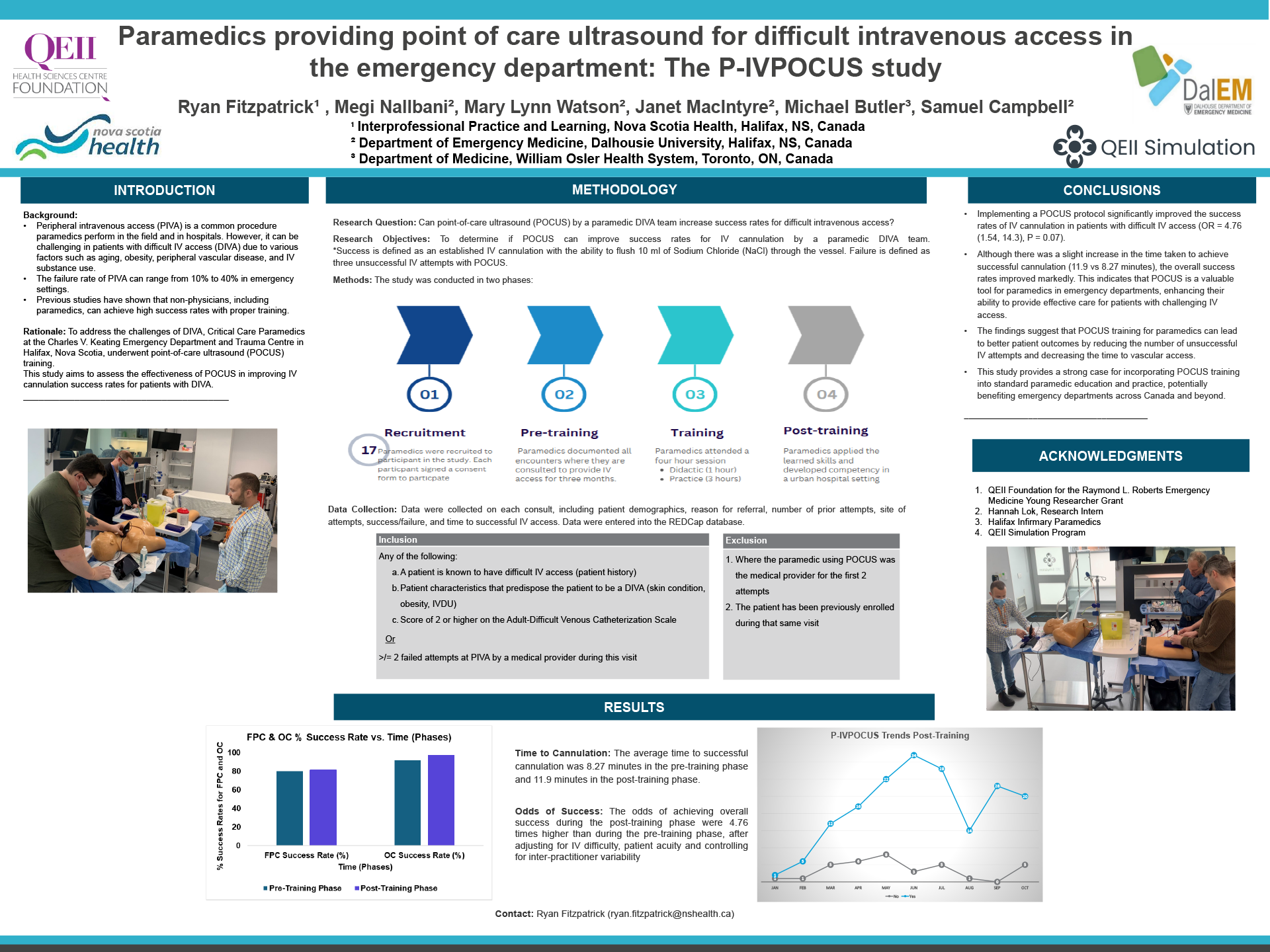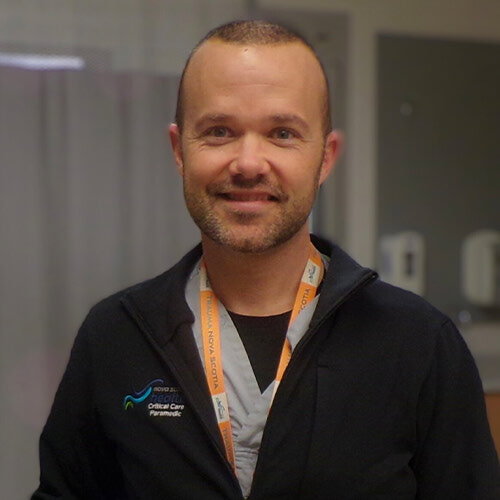 |
|
Title: Paramedics Providing POCUS for Difficult Intravenous Access in the Emergency Department Introduction: Emergency care frequently involves peripheral intravenous access (PIVA). Achieving successful PIVA can be challenging, particularly in patients with difficult intravenous access (DIVA) due to factors such as aging, peripheral vascular Objective: To evaluate the effectiveness of adding POCUS to achieve PIVA success in patients referred to the PIVA team. Methods: This prospective study was conducted at a tertiary care ED in Nova Scotia between October 2023 and October 2024. The study involved comparing a 3-month pre-intervention phase with 9 months post-intervention. Advanced or Critical Care Paramedics attended a four-hour training session on POCUS for DIVA. Patients were considered eligible for referral if they had any of the following: known to have DIVA, had characteristics that predispose the patient to have DIVA (e.g., obesity), a score of 2 or higher on the Adult-Difficult Venous Catheterization Scale (ADVC), or two failed attempts at PIVA by a medical provider. Data collected included first-pass success (FPS) rates, overall success rates (OS), and time to successful cannulation (TTC). Outcomes are presented unadjusted with proportions and odds ratios. Adjusted analyses were performed using a linear mixed model with individual paramedics set as a random effect. Results: 125 patients were evaluated in phase 1 and 303 in phase 2. FPS rates were 80.0% and 81.5%, and OS rates were 97.7% and 92.0%, respectively. Unadjusted overall success was more than 3 times greater in the POCUS group (OR 3.66; CI: [1.23, 11.6]). When adjusting for age, CTAS, ADVC score and intra-paramedic variance, overall success during the post-intervention phase was more than 4 times greater in the POCUS group (OR 4.76; CI: [1.54, 14.3]). TTC was 8.27 and 11.9 minutes, respectively, although the difference was not statistically significant. Conclusion: We found that the addition of POCUS to a paramedic DIVA team significantly improved success rates in patients shown to be or predicted to be DIVA. |
I have been a paramedic for 22 years. I have worked as both a pre-hospital and in hospital paramedic across Nova Scotia. I have been the paramedic educator for Nova Scotia Health in central zone for a year. I am new to research having participated in


